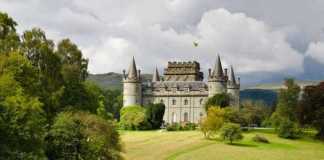Potsdam is a beautiful city filled with palaces and gardens, such as Sanssouci Palace and Park. It is the capital of the state of Brandenburg and has a population of almost 200,000. The city is just 40 km (24.85 miles) southwest of Berlin, the capital of Germany, and is a perfect day trip but it’s also worth spending a few days here as there is plenty to see and do.
The city was destroyed during the 17th century in the 30 Years War but was rebuilt 100 years later by Frederick the Great, King of Prussia. It is because of him that we have so many magnificent palaces to visit where we can learn about the lives of the Prussian Kings and their families. The city also offers museums, churches, and sites relating to the Cold War. There’s no chance that you will be bored in Potsdam, so let’s take a look at the top 20 things to do there.
Contents
- Potsdam, Germany
- Top Tours
- 20 Things To Do In Potsdam
- 1- Explore Sanssouci Palace
- 2- Take A Stroll Around Sanssouci Park
- 3- Visit The New Palace
- 4- Explore Filmmuseum
- 5- Visit The Orangery Palace
- 6- Visit The Chinese House In Sanssouci Park
- 7- See Potsdam’s Brandenburg Gate
- 8- Visit The Potsdam Museum In The Old Market Square
- 9- Explore The Dutch Quarter
- 10- View The Artwork In Museum Barberini
- 11- Have A Relaxing Day At Park Babelsberg
- 12- Explore New Garden And Marmorpalais
- 13- Visit Cecilienhof Country House
- 14- Visit St. Nicholas Church
- 15- Have Fun At Filmpark Babelsberg
- 16- Visit Charlottenhof Palace
- 17- Enjoy The Tropical Garden, Biosphere Potsdam
- 18- Visit The Russian Colony, Alexandrowka
- 19- Experience The KGB Prison
- 20- Go And See Glienicke Bridge
Potsdam, Germany
Top Tours
- Berlin: Potsdam – Kings, Gardens & Palaces – a six-hour tour of the main sights.
- Gardens & Palaces of Potsdam – explore on a bike tour from Berlin.
- Berlin: World Heritage Cruise to Potsdam – check it out now.
20 Things To Do In Potsdam
1- Explore Sanssouci Palace
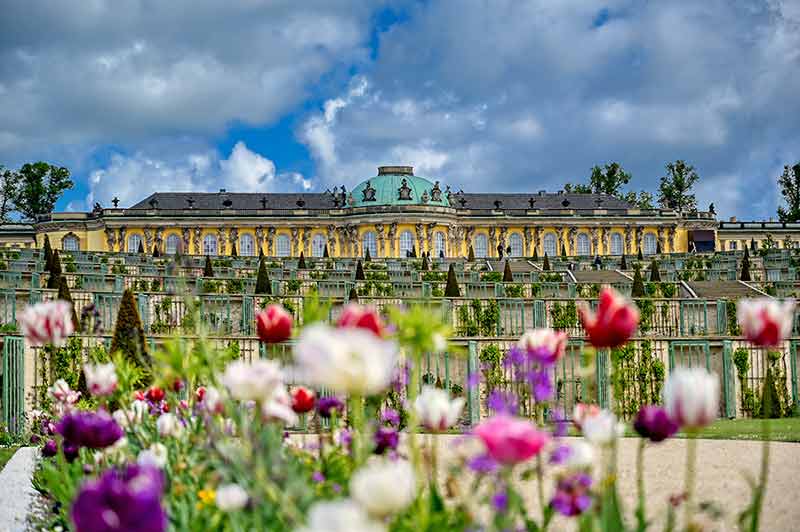
Sanssouci Palace was built in 1745 and is based on sketches drawn by Frederick the Great.
It was designed and decorated in the Rococo style and was used by the king as a summer palace.
Unlike most palaces, most of the building is single storey apart from the secondary wings.
The palace is situated at the top of a vineyard where you can visit Frederick’s mausoleum.
The central dome and circular rooms at each end are distinctive features.
There are stunning rooms to be explored, such as the marble hall, which has double Corinthian columns rising to the white-gilt dome, and the Concert Room, which is decorated with murals, and the library with its antique busts.
If you want to learn about the palace and Frederick the Great, take a guided tour.
The garden in the front of the palace is home to ornate decorations, while the courtyard at the back is surrounded by Corinthian columns.
A great time to visit the palace is in June as there is a two-day event called the Night of the Palaces when both the palace and the park are open in the evenings.
There is a completely different atmosphere exploring them in the dark.
Sanssouci Palace is at Maulbeerallee, 14469, Potsdam. Skip the lines and book your guided tour now.
2- Take A Stroll Around Sanssouci Park
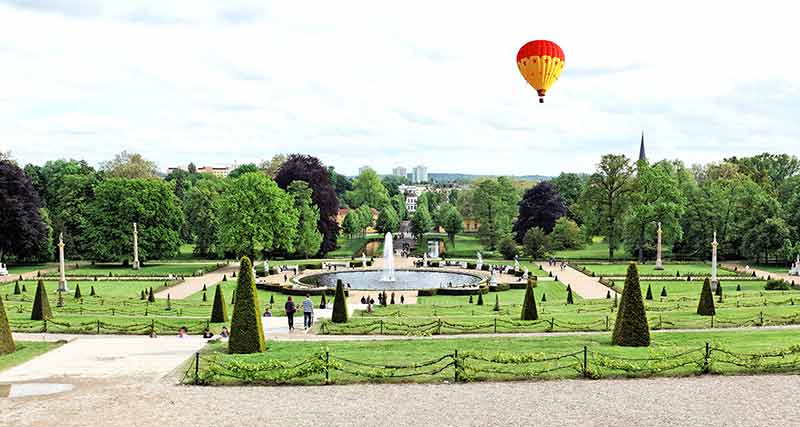
Sanssouci Palace is within Sanssouci Park, which covers nearly 300 hectares (741 acres).
There are other palaces and buildings to be visited in the park, but a great thing to do while in Potsdam is to spend some time just exploring the gardens.
To give you an example of the distance between buildings in the park, the Sanssouci Palace is 2.5 km (1.55 miles) from the New Palace.
The park is crisscrossed by alleys lined with hedges.
Highlights of the park include Neptune’s Grotto, which exhibits the busts of 4 Moors.
In the Orange Roundel, you will find 17th-century paintings by artists such as Rubens, Caravaggio, and Van Dyck.
At the Great Fountain, sculptures of mythological figures and the four elements of air, earth, sea, and fire are showcased.
Sanssouci Park is at Zur Historischen Mühle 1, 14469, Potsdam. Explore the gardens on this tour.
3- Visit The New Palace
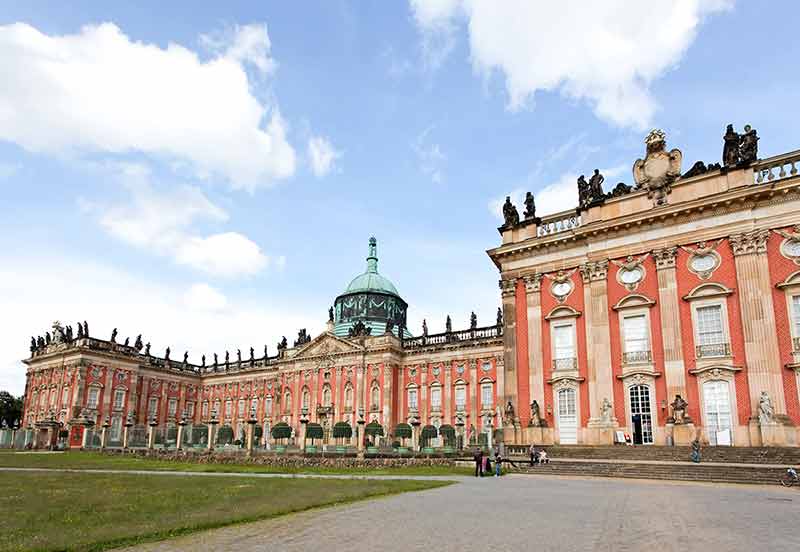
The New Palace was built between 1763 and 1769 on the commission of Frederick the Great.
He wanted it built in the Baroque style, which had been typical of the previous century, rather than in the Neoclassical style, popular in the 18th century.
The palace is built in red brick with a copper dome and is much larger than the Sanssouci Palace.
It was used for official purposes as well as for entertaining and has large banquet halls where guests would eat sumptuous meals as well as luxurious bedrooms.
Frederick always wanted to show the power of Prussia over other nations, hence the lavishness of the palace.
The New Palace has a total of 200 rooms and four galleries decorated in Rococo style.
The most spectacular gallery is the Grottensaal which has walls clad with more than 24,000 minerals, gemstones, fossils and seashells.
A highlight of the palace is the Baroque theatre, which is one of the most beautiful Baroque theatres in Europe.
In front of the palace are buildings, which are worth your while visiting, such as the Temple of Friendship and the Ancient Temple.
These are also based on Frederick’s designs while to the back of the palace are two brick buildings with Corinthian colonnades, a triumphal arch, and curved external staircases.
You can take a guided tour to learn more about the palace.
4- Explore Filmmuseum
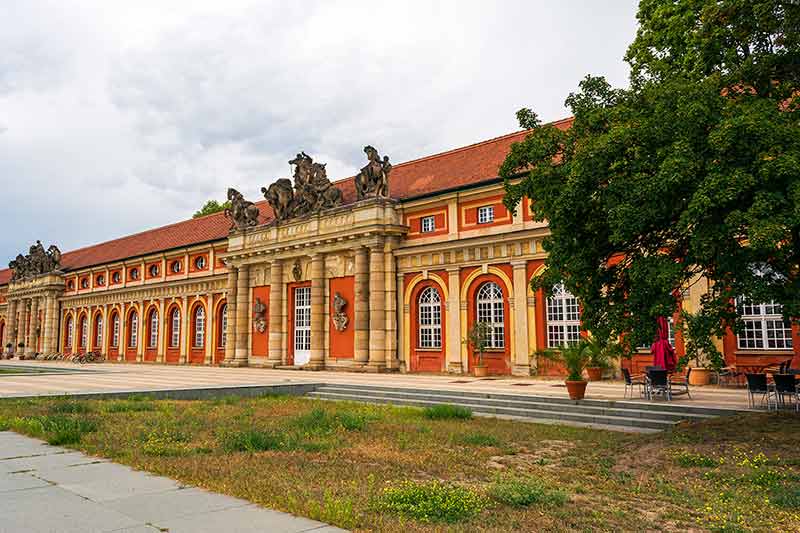
Filmmuseum can also be found in Sanssouci Park in the stables of the palace.
The oldest film museum in Germany has recently been renovated and is well worth a few hours of your time as there are over a million exhibits about filmmaking to be viewed.
These include props, cameras, microphones and costumes while the highlight of the museum is the exhibition about Studio Babelsberg.
It is the oldest film studio in the world which has been continuously operating, having been in business since 1912.
The exhibition is interactive, and you will learn about screenplay, casting, costume design, make-up, set design, editing, sound, lighting, marketing, and more.
The museum regularly shows national and international films so check online to see if there is anything you would like to see.
There are several screenings daily.
There is an excellent cafe at the museum so you can easily spend half a day or more here.
Filmmuseum is at Breite Straße 1A, 14467, Potsdam.
5- Visit The Orangery Palace
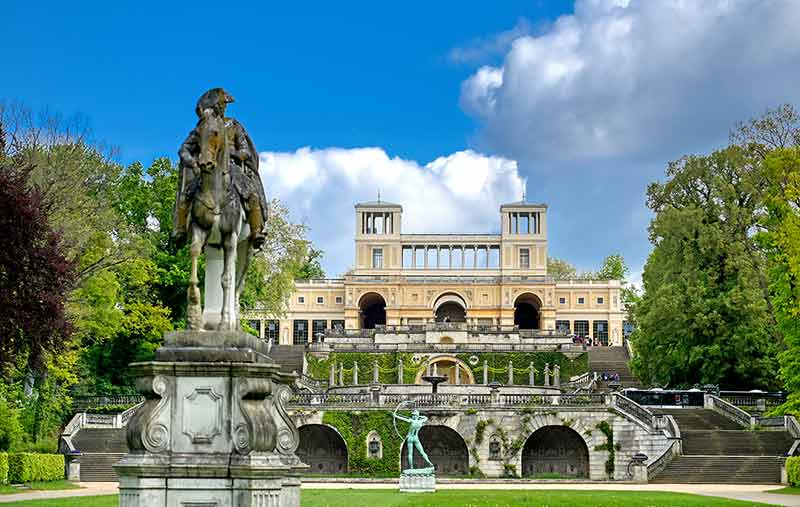
The Orangery Palace was built for King William IV between 1851 and 1864.
It has the largest facade of any of the palaces in Sanssouci Park, measuring 300 metres (984 feet) long.
It was built in the Italian Renaissance style which was favoured by the king.
It has been influenced by Villa Medici in Rome and the Uffizi Gallery in Florence.
The middle part of the palace contains the lavish royal apartments, with a tower on each side.
The highlight of the palace is the Raphael Hall, which was designed to look like the Sala Regia, a state hall in the Vatican.
It is lit by a large skylight and contains 67 copies of Renaissance paintings by the artist, Raphael, such as The Transfiguration.
The walls are covered in red silk, making a beautiful backdrop for the paintings.
In the western part of the hall is a tower which you can climb for panoramic views of the park.
You can just about see the New Palace from the top.
The Orangery Palace is at An der Orangerie 3 – 5, 14469, Potsdam.
6- Visit The Chinese House In Sanssouci Park
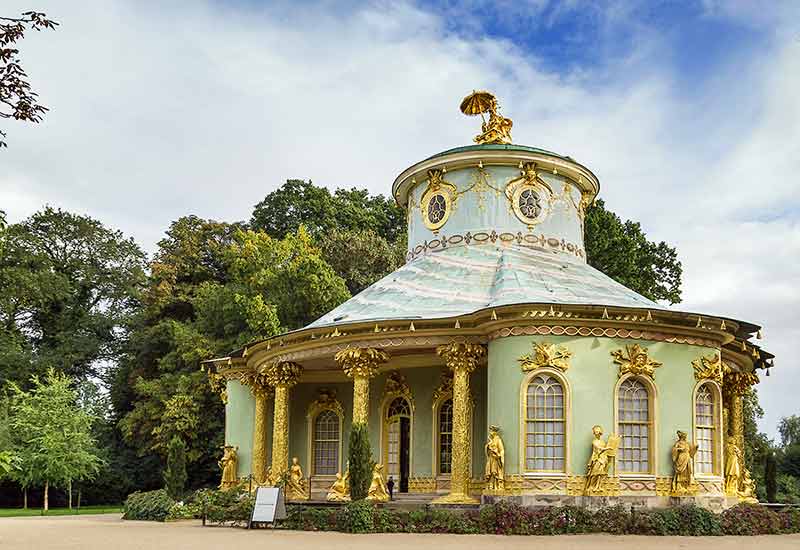
The delights of Sanssouci Park continue with the Chinese House, which shows that you need more than a day to fully appreciate the park and its buildings.
The Chinese House, sometimes called the Chinese Teahouse, was commissioned by Frederick the Great in 1763.
It was built to be the centre of his flower and vegetable gardens.
As the name suggests, it is Asian in design, but it also has a touch of Rococo, an ornamental and dramatic style of 18th-century design.
It is worth going inside as you will see musical monkeys and an extensive collection of porcelain in the three rooms.
There are French windows to allow the light to get in and murals adorn the stucco marble walls.
The Chinese House is at Am Grunen Gitter, 14469, Potsdam.
7- See Potsdam’s Brandenburg Gate
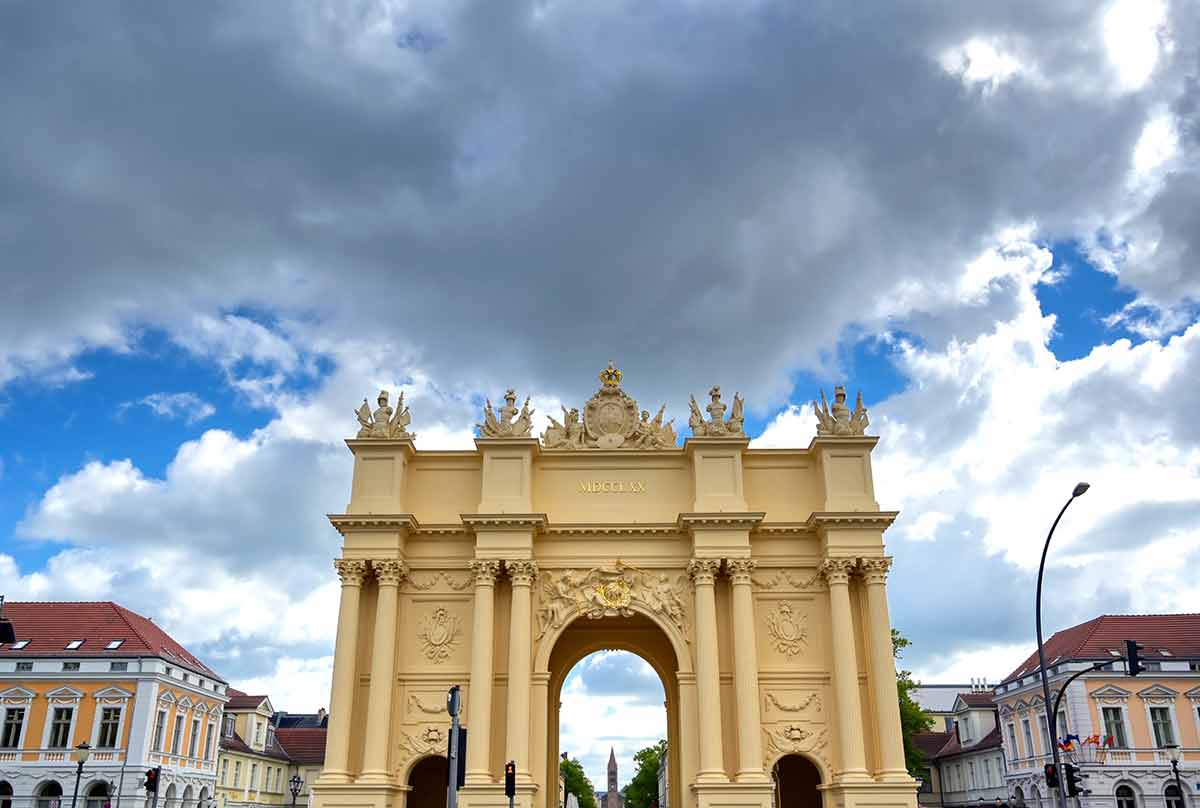
You have probably heard of the Brandenburg Gate, but most people think of the one in Berlin.
However, Potsdam has its own Brandenburg Gate, which was built between 1770 and 1771, replacing a mediaeval gate that stood there previously.
It was commissioned by Frederick the Great to celebrate victory in the Seven Years’ War.
Potsdam’s Brandenburg Gate was part of the city walls until they were taken down at the beginning of the 20th century but now the gate stands majestically alone.
An unusual aspect of the gate is that it has different designs on the inner and outer sides.
Each side was designed by a different architect.
The inner side, which faces the city, was designed by Carl von Gontard, is rendered, and is decorated with trophies and pilasters.
The outer side, which faces the countryside, was designed by Georg Christian Unger and has a double row of Corinthian columns, decorated with sculptures.
Potsdam’s Brandenburg Gate is at Luisenplatz, 14771, Potsdam. The City Sightseeing Hop-On Hop-Off Bus Tour will get you there.
8- Visit The Potsdam Museum In The Old Market Square
Potsdam Museum is in the Old Town Hall in the Old Market Square, a magnificent building designed in the Baroque style.
It was built in 1753, during the reign of Frederick the Great, and has magnificent Corinthian columns and a tower with a steeped dome.
It was damaged during WWII and has since been restored, however, the highlight, a statue of Atlas with the world on his back, survived the war and is an original.
The museum covers 1,300 square metres (13,993 square feet) and has a permanent exhibition, which tells you about 1,000 years of Potsdam history.
It also houses temporary exhibitions covering such topics as art and culture in the city.
Potsdam Museum is at Am Alten Mark 9, 14467, Potsdam.
9- Explore The Dutch Quarter
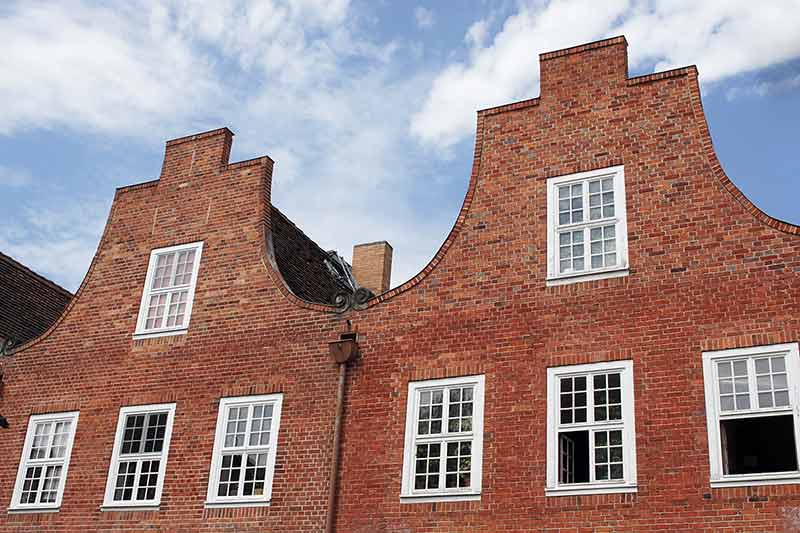
The father of Frederick the Great, Frederick William I, was interested in Dutch culture and decided to have this quarter built.
It was constructed between 1737 and 1742 and is composed of 134 red brick houses with gables and shuttered windows, all in the Dutch style.
It is the largest Dutch settlement outside of the Netherlands and a popular place to find unusual shops, cafes and top-quality restaurants.
There is a museum in the Dutch Quarter, the Johan Bouman House.
Bouman was the architect in charge of this building project and the museum tells you how it was planned, as well as exhibiting 18th-century furniture and household items.
Special events are held in the quarter, including a Christmas Market in December.
There is also a tulip festival in April and a pottery market in September.
10- View The Artwork In Museum Barberini
Museum Barberini is housed in an 18th-century palace in the Old Market Square.
The palace was destroyed in 1945 but the facade has been restored, however, the inside is new and modern.
It opened as a museum in 2017.
In the museum, you will find a collection of paintings belonging to an American, Hans Plattner, which concentrates on German art and there is also a collection of Old Masters with artwork by painters such as Monet, Renoir, and Munch.
Temporary exhibitions are held which feature art from all over the world.
English-speaking tours are available every day and there is a restaurant on site.
Museum Barberini is at Humboldtstrasse 5 -6, 14467, Potsdam. Book your entry tickets here.
11- Have A Relaxing Day At Park Babelsberg
Park Babelsberg covers 114 hectares (281.7 miles) and was commissioned in 1833 by the Crown Prince William, who later became King William I.
It is in a beautiful setting by the Tiefen See Lake on the banks of the Havel River.
From here you get beautiful views of Glienicke Park across the water and the Glienicke Bridge.
The park has many footpaths for you to follow and attractive garden terraces to view flowers and plants, as well as enjoy fountains, artificial lakes, streams and monuments.
There is a victory column on the highest point of the park, built to commemorate Prussia’s domination in battles.
Park Babelsberg is at Schlosspark, 14482, Potsdam. Download this self-guided discovery walk.
12- Explore New Garden And Marmorpalais
As well as the Sanssouci Park, Potsdam has another large park to escape from city life.
New Garden (Neuer Garten) covers 102 hectares (253 acres) and lies on the Heiliger See.
The park was created in 1787 in the style of an English Garden Estate, but now the gardens are more formal.
The highlight of the park is Marmorpalais, which translates to Marble Palace however, only decorative pieces are made from marble and the palace itself is made from brick.
It was built between 1787 and 1791 and was commissioned by King Frederick William II as a summer palace.
You can visit the palace on a guided tour and from the round pavilion on the roof, you will get breathtaking views.
Highlights of the palace include a Gothic library and a pyramid-shaped cold storage room.
13- Visit Cecilienhof Country House
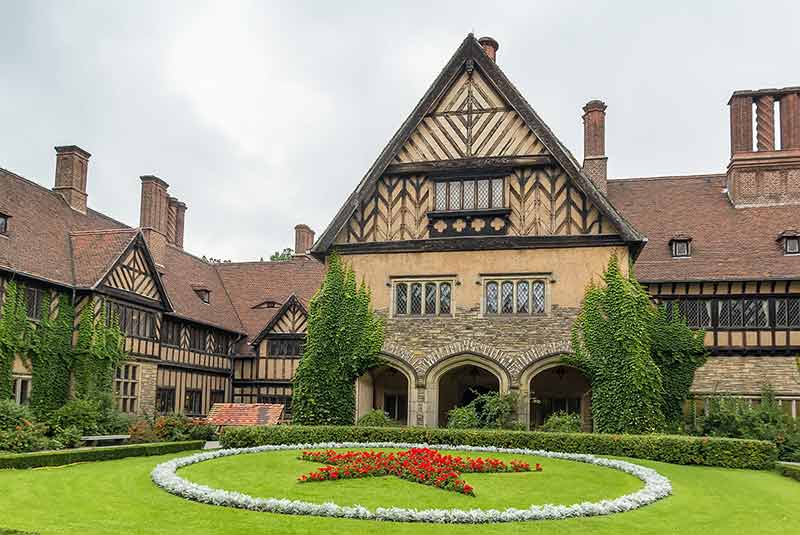
The Cecilienhof Country House is also in the New Garden and is famous for being the meeting place of the Potsdam Conference at the end of WWII.
This was attended by Churchill from the UK, Truman from the US and Stalin from the USSR.
As well as marking the end of the war, it signified the beginning of the Cold War.
The house was built between 1914 and 1917 and was designed to look like an English Tudor country house.
It is half-timbered and has 55 Gothic turreted chimney stacks.
There are 176 rooms which are grouped around several courtyards.
The house is now a museum, and you can visit the room where the Potsdam Conference took place.
It contains many original artefacts and there are displays which tell you about the conference.
The Cecilienhof Country House is at Im Neuen Garten D, 14469. Potsdam. Reserve your entrance tickets here.
14- Visit St. Nicholas Church
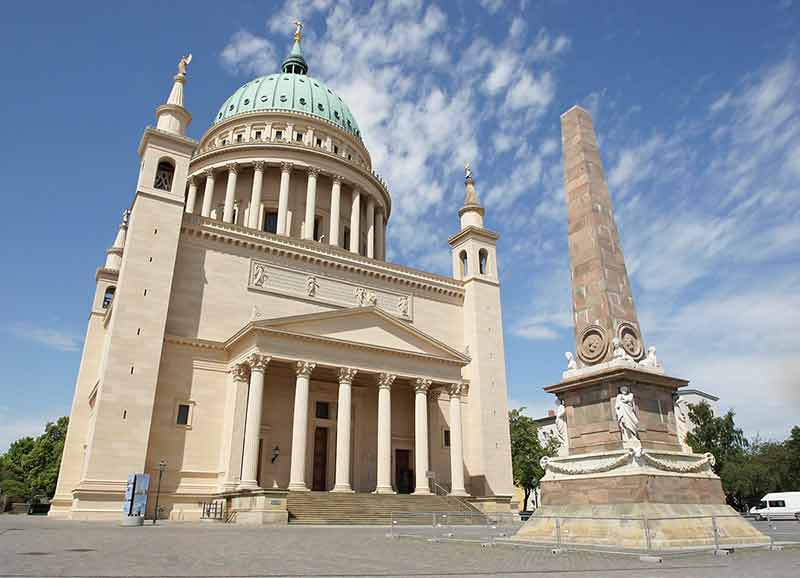
St. Nicholas Church is in the Old Market Square, opposite the Old Town Hall.
It was built between 1830 and 1837 in the Neoclassical style.
The highlight of the church is its 77-metre (252.6-foot) dome which is one of the tallest structures in the city.
You can climb the 216 steps to the top of the dome from where you will have spectacular views of the city and the surrounding area.
The church was severely damaged in WWII but has been restored and reconsecrated.
It is open to everybody for services and general viewing.
Concerts are also held from time to time.
St. Nicholas Church is at Am Alten Markt, 14467, Potsdam.
15- Have Fun At Filmpark Babelsberg
Filmpark Babelsberg is based at the oldest film studio in the world and offers behind-the-scenes tours of historic film sets.
You will get to learn about some of the tricks of the trade and maybe spot a star or two.
You can catch a show with stuntmen, pyrotechnicians, and animal trainers, and learn how they execute their crafts.
Young children aren’t left out as there are exhibitions for them based on TV shows, and there is an adventure playground.
There is also a 4D cinema showing short films which will immerse you in the adventure being shown on screen.
Filmpark Babelsberg is at Großbeerenstraße 200, 14482, Potsdam.
16- Visit Charlottenhof Palace
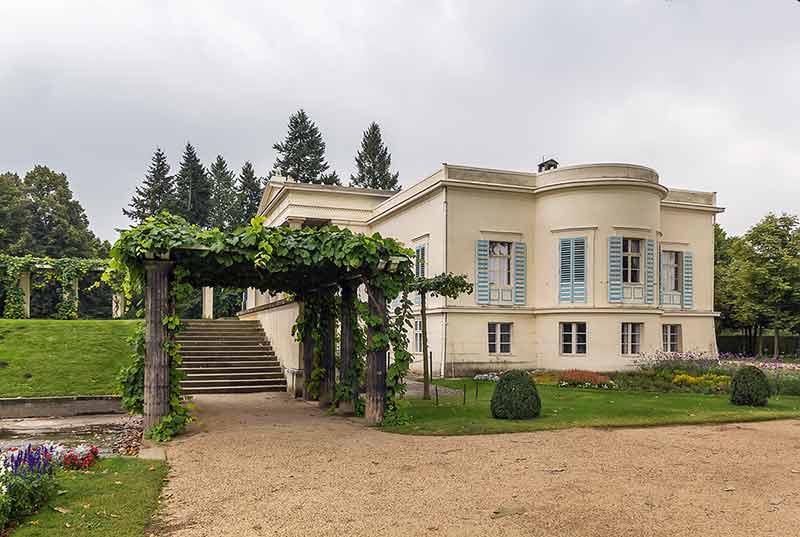
Charlottenhof Palace is another palace in Sanssouci Park, southwest of Sanssouci Palace.
It is a smaller palace but it’s a lovely place to visit.
The Palace was built on land given by King Frederick William III to his son in 1825 as a Christmas present.
Crown Prince Frederick William, later to become king, designed much of the palace himself and it was completed in 1829.
10 rooms are open to the public.
There is a blue and white theme throughout, and the rooms have simple but elegant furniture.
The highlight is the ‘tent room’ which was designed to look like an Ancient Roman royal tent.
It was used as a guest room.
Make time to tour the garden, which was designed by the famous landscape designer, Peter Joseph Lenne.
It has been designed in an English style with fountains and porticos.
Charlottenhof Palace is at Geschwister Scholl-Straße 34A, 14471, Potsdam. You may like this city and castles tour.
17- Enjoy The Tropical Garden, Biosphere Potsdam
This is a great place to visit with the whole family, especially on a rainy day.
It is an indoor tropical garden with more than 350 species of plants and over 20,000 individual plants and trees.
You will be able to see stunning orchids, a palm grove, and a mangrove swamp.
There is a butterfly house with between 50 – 80 butterflies from 10 – 20 species.
You might see malachite butterflies or sky butterflies and will be allowed to view the different stages of a butterfly’s growth from eggs to caterpillars to pupation to hatching.
There are various animals to be seen in the garden including pythons, tree frogs, chameleons, iguanas, wild guinea pigs, and marmosets.
The Aquasphere introduces you to various fish such as clownfish and surgeonfish.
To give you an impression of what it is like in a rainforest, there is a simulated storm with thunder and lightning every hour.
Biosphere Potsdam is at Georg-Hermann-Allee 99,14469, Potsdam. Book your entry tickets online to skip the lines.
18- Visit The Russian Colony, Alexandrowka
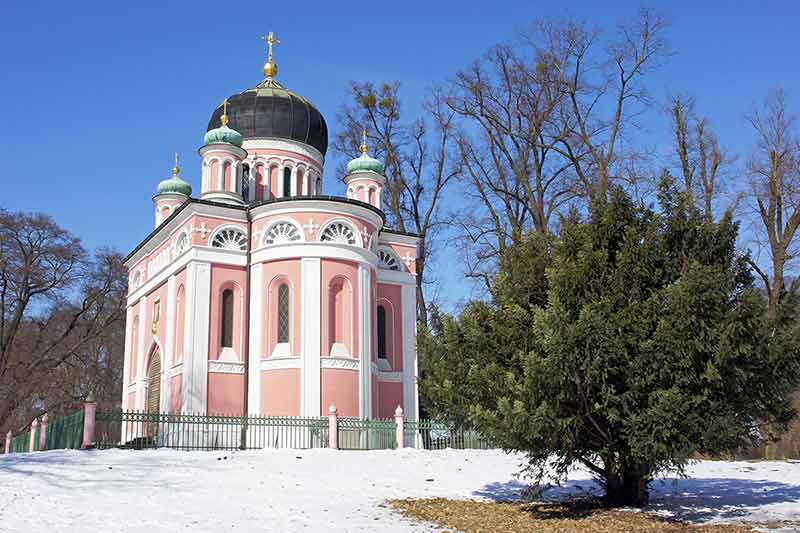
Alexandrowka is a settlement built between 1826 and 1827 for Russian soldiers who had settled in Potsdam and formed a choir.
It was commissioned by King Frederick Willian III and named after the Tsar of Russia, Alexander I, to commemorate the friendship between the two Royal families.
The houses were modelled on Russian timber buildings and laid out in the shape of St. Andrew’s Cross.
There is an interesting Russian Orthodox church in the settlement, the Alexander Nevsky Church, which is elaborately decorated with furnishings from St. Petersburg in Russia.
There is also a Jewish cemetery, but it was already there when the settlement was built.
The houses were passed down to the descendants of the choir members, the last dying only in 2008.
Alexandrowka is at Russische Kolonie 2, 14469, Potsdam.
19- Experience The KGB Prison
Life was hard in a KGB prison and if you want a glimpse into this chilling piece of history, you can take a tour of the KGB prison in Potsdam.
The prison was run by SMERSH, which was the Soviet counter-intelligence organisation.
It held German and Russian prisoners who were believed to be collaborators or spies.
The prison was used from the 1950s to the 1980s when the Berlin Wall came down.
The prisoners weren’t just locked up, they were also tortured.
The tour takes you to some of the prison cells and the detention centre.
There is also an exhibition which tells you about the prison.
The KGB Prison is at Leistikow Strasse 1, 14469, Potsdam.
20- Go And See Glienicke Bridge
Glienicke Bridge is a bridge over the river Havel which connects Potsdam with Berlin.
It has important historical significance because Warsaw Pact agents were exchanged for Western spies on the bridge.
At this time, the bridge was closed to traffic but now it is open again.
The bridge is the fourth on the site and was built in 1907.
It was damaged during WWII but was reconstructed.
In the centre of the bridge is a white line which once divided East Berlin from West Berlin.
Just west of the bridge is Villa Schoningen which is worth visiting.
Here you can see an exhibition about the bridge and there are also temporary exhibitions. Check out this tour.
For more about Germany, read:
- 20 German Shows On Netflix
- 22 Famous Landmarks in Germany
- 15 Magic Things To Do In Munich
- 25 Facts About Germany
- 20 Castles In Germany
- 10 Bavarian Castles
- 20 Drinks In Germany
- Best Time To Visit Germany
- Berlin Nightlife
- Munich Nightlife
- 20 German Cities
- 20 Things To Do In Stuttgart
- 20 Things To Do In Cologne
- 20 Things To Do In Dusseldorf
- Where To Stay In Berlin
- 20 Types of Food in Germany To Taste
- 15 Famous Things Germany is Known For
- 20 Things To Do In Dresden
- 20 Things To Do In Frankfurt
- 20 Things To Do In Leipzig
- 20 Things To Do In Bonn
- 20 Things To Do In Bremen
- 20 Things To Do In Potsdam
- 20 Things To Do In Regensburg
- 10-day Germany Itinerary
Plan Your Trip

Rent A Car – Find the best car rental rates at Discover Cars. They compare car hire companies to provide you with the best deal right now.

Find A Hotel – If you’re curious about this article and are looking for somewhere to stay, take a look at these amazing hotels.
